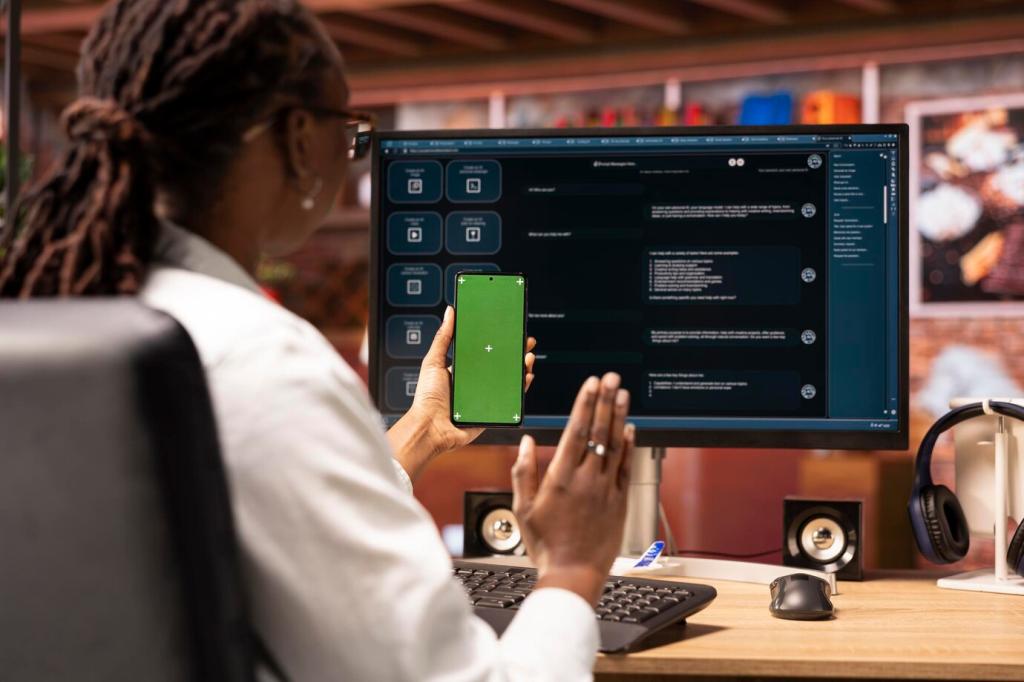Mobile App Bug Identification and Resolution Techniques
Today’s chosen theme: Mobile App Bug Identification and Resolution Techniques. Explore practical tactics, real stories, and checklists to find, reproduce, and fix issues faster across iOS and Android. Share your toughest bug in the comments and subscribe for weekly, hands-on guides.
Mapping the Bug Landscape: What You’re Really Fighting
Crashes, ANRs, and Hangs
Crashes terminate abruptly, ANRs signal main thread stalls on Android, and hangs feel like frozen screens. Track stack traces, main thread work, cold starts, and memory pressure to pinpoint culprits quickly before users churn from repeated app failures.

Reproduction and Triage That Save Hours
Provide exact steps, screen recordings, build number, device model, OS version, network type, and timestamps. Capture logs simultaneously. Specificity turns guesswork into science and helps teammates reproduce within minutes, not hours, accelerating both investigation and resolution for everyone involved.
Reproduction and Triage That Save Hours
Assess user reach, revenue risk, workflow blockage, and workarounds. A crash affecting one percent of active sessions may outrank a cosmetic glitch seen by many. Align severity with measurable impact and business context to guide engineering time wisely.
Reproduction and Triage That Save Hours
Include expected versus actual behavior, repro frequency, environment details, logs, screenshots or video, suspected modules, and links to related tickets. Keep it concise yet complete. A great report invites quick action and eliminates back and forth clarification delays immediately.
Instrument Your App: Logs, Crashes, and Signals
Use consistent log levels, tags, correlation identifiers, and redaction for privacy. Log business events alongside technical breadcrumbs to reconstruct user journeys. Keep logs actionable, searchable, and sample heavy paths so performance remains stable in production during normal usage.
Instrument Your App: Logs, Crashes, and Signals
Enable symbolication with dSYMs or mapping files, attach breadcrumbs, and group by root cause. Tools like Crashlytics, Sentry, and Bugsnag excel when metadata is rich. Prioritize regressions and spikes using alerts tuned to meaningful thresholds rather than default noise.


Unit Tests for Core Logic
Isolate business rules with dependency injection, deterministic clocks, and predictable random values. Test boundary conditions and failure paths as much as sunny-day flows. Small, fast tests create confidence to refactor aggressively without shipping new and avoidable regressions.
UI Tests Without Flakes
Use Espresso or XCTest with proper synchronization, stable selectors, and realistic fixtures. Avoid network dependence using mocks. Run on a curated device farm. Measure flake rates and quarantine problematic tests until fixed, preserving developer trust in the suite.
Mock Servers and Contract Tests
Employ WireMock or MockWebServer, validate schemas with contract tests, and pin example payloads. Simulate timeouts and error codes. By controlling responses deterministically, you reproduce issues reliably and verify robustness against messy, real world backend behavior under load.

Breakpoints, Watches, and Live Views
Leverage Android Studio and Xcode breakpoints, conditional expressions, and variable watches. Inspect view hierarchies and constraints live. Step through async flows methodically to reveal race conditions and incorrect state transitions that are otherwise invisible in logs alone.

Network Inspection and Certificates
Proxy traffic with Charles or Proxyman, simulate flaky networks, and verify headers, caching, and retries. For staging, handle certificate pinning safely to observe requests. Network visibility illuminates many failures that masquerade as UI problems or intermittent device quirks.

Fix, Verify, Prevent: From Patch to Prevention
Investigate beyond symptoms, capturing triggers, timeline, detection gaps, and contributing factors. Document learnings and follow ups with owners and due dates. Blameless culture enables honest analysis, which is essential for durable, organization wide improvements and lasting resilience.
Fix, Verify, Prevent: From Patch to Prevention
Gate risky code behind flags, roll out gradually, and monitor metrics. Keep kill switches for problematic features. This approach limits blast radius, accelerates rollback decisions, and reduces pressure during incidents when every minute truly matters most.
Anecdote: The Timezone Bug That Dodged Our Tests
Discovery Through a Tiny Dip in Crash-Free Users
We noticed a one percent drop on older devices during month end. Crash reports clustered around a date parsing utility. Analytics showed checkout funnel abandonment at midnight, hinting the failure aligned with time boundaries and calendar rollovers precisely.
Reproducing on a Budget Device at 23:59
We set system time near midnight, switched locales, throttled network, and enabled airplane toggles. A background sync triggered a null timestamp path. Screen recording plus verbose logs captured the sequence, turning a ghost into a repeatable, testable scenario quickly.
Resolution, Patch, and Lasting Safeguards
We standardized time to UTC, added null safety, and wrapped parsing with strict formats. A unit test locked the bug forever. We also introduced synthetic midnight runs in CI to catch similar boundary issues before any release.
Teamwork, Process, and Community
Engineers, QA, and Product in Sync
Run daily triage, define acceptance criteria, and schedule bug bashes for critical milestones. Shared dashboards keep everyone aligned on impact and progress. When priorities are transparent, fixes land faster and fewer surprises reach your end users unexpectedly.


Bug Templates and Reproduction Playbooks
Adopt standardized templates, device matrices, and checklists for network, locale, and lifecycle steps. Consistency improves reproduction rates and reduces ambiguity. Publish your playbook so new team members ramp up quickly and maintain quality from their first contribution onward.
